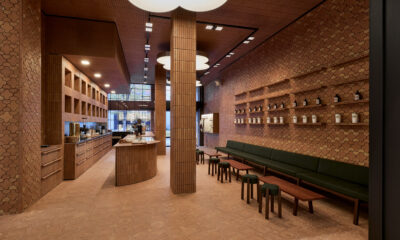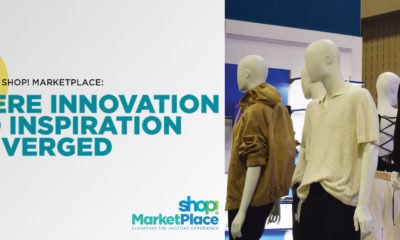John Wanamaker first set up shop in Center City, Philadelphia, more than 100 years ago with what was arguably one of the first department stores in the United States. Part of the allure of the grand emporium was the 2500-pound bronze statue of a magnificent eagle. Designed by German sculptor August Gaul, the statue was part of the Louisiana Purchase Exposition in St. Louis. After the fair closed in 1904, Wanamaker purchased the eagle to grace the main floor of his multi-level store. So memorable and recognizable was the stately bird that it soon became an integral part of the community. In fact, it became part of the Philadelphia lexicon as denizens of the “City of Brotherly Love” would say, “I’ll meet you at the eagle.” Similarly, when Siegel and Cooper opened what was purportedly the largest store in the world in New York’s Ladies Mile in 1896, a spectacular fountain was installed in the center of the establishment. And as in Philadelphia, businessmen, lovers and friends would say, “I’ll meet you at the fountain.”
During my tenure at WalkerGroup, one of the largest architectural retail design firms in the world at the time, we designed a mammoth 10-story, full-line department store in Ulsan, South Korea, called Jurione. A great architectural feature of the store was a grand atrium featuring a dynamic, multi-faceted skylight above. So memorable was the atrium that the store was dubbed, “The Atrium Store.” It wasn’t long before the locals would say, “l’ll meet you at the atrium.” Similarly to Wanamaker’s in Philadelphia and Siegel and Cooper in New York, Jurione had become an integral part of the Ulsan community.
Today, retailers are scrambling to stay relevant in a rapidly changing world, and the word “community” is being bandied about as a save-all for the retail industry. While there are no great panaceas, engaging with the community is indeed a step in the right direction. But what does it mean to connect with and become part of the community?
First of all, we have to define the word community. To a fledgling retailer unfurling its wings in SoHo, the word community has a very different meaning than it does for an established heritage store opening in a distinctive residential neighborhood. SoHo is a magnet for tourists, fashion and design enthusiasts, and forward-thinking progressives. The area has a rich history as a major manufacturing hub during the later stages of the Industrial Revolution, and then as a haven for artists occupying loft spaces and street-level galleries showcasing their work. In keeping with the ebb and flow of any evolving urban center, retail followed and the artists moved out. Remaining as standard bearers of history and culture are the cast iron buildings that served as factories and warehouses, turn of the century cobblestone streets and gallery-style storefronts. Being part of the community in this part of the metropolis isn’t necessarily connecting with the locals, but connecting rather with the vibes and spirit that make this slice of Manhattan so compelling. Designing environments and concepts relevant to those drawn to the energy of SoHo is a connecting node to those seeking to immerse themselves in the flavor of this dynamic neighborhood.
Conceptual and/or lifestyle communities existing within a physical community or neighborhood must also be considered. Perhaps a retailer can connect with the skateboarding community as demonstrated by The Labor Skateboard Shop on Canal Street; or the LGBTQIA+ community as The Phluid Project has done in SoHo. Connecting with these communities means becoming a center for interaction, advocacy, information, safety and understanding. These connections involve the exchange of ideas and the sharing of experiences, philosophies and points of view.
And then of course there’s the desire to become part of the fabric of a particular neighborhood. All major urban centers are heterogeneous, and I reference “the many faces of New York,” from Chinatown to Little Italy to Harlem and from Williamsburg to Jackson Heights. All are quintessential parts of a grand metropolis, but all have a celebrated, individual culture that is theirs and theirs alone. This is one of the many nuances that makes New York the great city that it is.
Advertisement
Whole Foods in Williamsburg with its rooftop kale farm speaks volumes to health conscious, eco-friendly, self-starting millennials, while Lee’s Bakery in Harlem is a go-to place for a coffee and a slice of homemade apple pie. A neighborhood favorite, Mr. Lee’s tagline is “rugula made by a brother.” Popular year-round in the community, sales of the iconic pastries seem to spike as members of the area’s Jewish community flock to the tiny bakery during the High Holidays to help usher in the New Year with Mr. Lee’s sweet creations. Also of note is Target’s latest venture with a new small format store on the Upper East Side. Extensive focus group sessions were conducted with the community before putting pencil to paper. The resultant store environment is a total reflection of this iconic New York neighborhood.
In all cases, becoming part of the community is all about sharing and making your store their store. To truly engage any community, retailers must ask themselves, “What would my neighbors miss if my store didn’t exist?” To connect, retailers must understand the wants and needs of the community and be empathetic toward their challenges and concerns. Being part of any community means putting interaction before transaction.
Eric Feigenbaum is a recognized leader in the visual merchandising and store design industries with both domestic and international design experience. He served as corporate director of visual merchandising for Stern’s Department Store, a division of Federated Department Stores, from 1986 to 1995. After Stern’s, he assumed the position of director of visual merchandising for WalkerGroup/CNI, an architectural design firm in New York City. Feigenbaum was also an adjunct professor of Store Design at the Fashion Institute of Technology and formerly served as the chair of the Visual Merchandising Department at LIM College (New York) from 2000 to 2015. In addition to being the Editorial Advisor/New York Editor of VMSD magazine, Eric is also a founding member of PAVE (A Partnership for Planning and Visual Education). Currently, he is also president and director of creative services for his own retail design company, Embrace Design.


 Headlines1 week ago
Headlines1 week ago
 John Ryan2 weeks ago
John Ryan2 weeks ago
 Headlines7 days ago
Headlines7 days ago
 Headlines2 weeks ago
Headlines2 weeks ago
 Headlines1 week ago
Headlines1 week ago
 Retail Buzz3 days ago
Retail Buzz3 days ago
 Headlines1 week ago
Headlines1 week ago
 Headlines1 week ago
Headlines1 week ago















